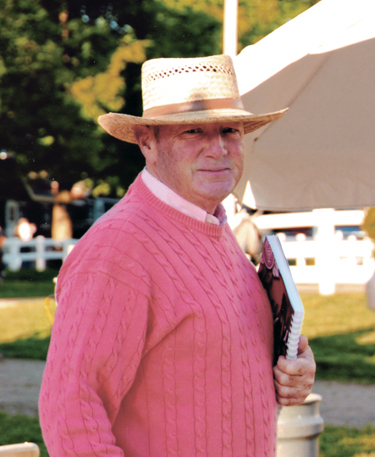The author believes that our rule-change process must be more open and inclusive.
Once again, with the U.S. Hunter Jumper Annual Meeting fast approaching, Dec. 7-10, in St. Petersburg, Fla., we’re hearing about rule change proposals that will significantly change how our sport operates.
For years I’ve complained about the tardiness of notifying the membership about these proposals, but the situation never seems to improve. This is one of the changes that we need.
Many of the current rule changes, published in the USEF Rule Change Proposals For 2010, were submitted in June, while others are last-minute submissions from various committees. If it’s taken a committee all year to finalize a proposal, I personally don’t think that a month is enough time for the membership to digest these suggestions and come to a fair consensus.
Many of these ideas are debated at state horse show conventions, but most of the conventions happen after the USHJA Annual Meeting.
The small percentage of our membership that appears at the Annual Meeting usually is unaware of the intent of most proposals. With a majority of committee members present, it’s difficult to argue the pros and cons of each proposal, and often there’s a lack of time to go over each one.
If the USHJA and the U.S. Equestrian Federation are to appear to be democratic organizations, then this procedure must be changed.
In my opinion, the current rule-change process is a joke. Even when proposals are either supported or rejected in open forums, the USHJA Board of Directors may take the opposite stand. Sometimes there are good reasons for not going with the majority, but, then again, sometimes politics take over.
ADVERTISEMENT
We all know that there are those people who have the ability to argue until they change enough minds to get a rule either passed or rejected.
I don’t think that any of these major changes—that most members don’t know anything about—should be passed or rejected at this year’s USHJA Annual Meeting. There’s simply not enough time to present both sides of the question fairly. To do anything less is a disservice to our members.
In the current National Hunter & Jumper Association survey, the vast majority of respondents are opposed to most of the rules submitted by the USHJA Hunter Restructure Committee.
Seventy-five percent do not want to limit a horse’s green term to one year; 85 percent are opposed to a horse winning $4,000 before going out of the green division; and 75 percent are against creating an “open hunter” division where a horse can jump whatever height his rider chooses.
Clearly, the Hunter Restructure Committee has not gone out to the membership to see just how many members support these changes. Again, in my opinion, it’s wrong to change the system that’s been in place for many years unless you have the support of the vast majority. This is a big deal! And please don’t tell me that you know what’s best without consulting the membership.
Another change is to have the current B-rated shows become A-rated. Why is this a good thing? Why is this necessary?
Most of the current B-rated shows are small, one-day shows with few horses in the rated divisions. The prize money is minimal. Entry fees are relatively low compared to A-rated shows.
With the list of requirements for A-rated shows increasing, do we not think that the cost of showing at these new A-rated shows won’t go up as well? Something is wrong with this picture! Are we trying to grow our sport or make it smaller? I don’t think that this is a good idea, but, obviously, some people do.
ADVERTISEMENT
So my question is this—have they looked at the entire picture? It’s good to want improvement, but at what costs?
The “menu list” for the AAA-rated shows—where you have to have a certain number of the menu items to qualify as an AAA-rated show—indicates to me that some members of the committee don’t realize that entries are down this year. Shows are barely making a profit in some cases.
Ultimately, the costs for these menu items will be passed on to the exhibitor in one form or another. Do the committee members not see this? This is not the time for such a rule!
We have a small, core group of people who are making most of the rules. Our committees are practically the same from year to year. I doubt that many people reading this article have any idea of how committees are appointed. Yes, we do need some changes, but before we change our rules we need to change the procedures.
The USHJA and USEF should strive to improve the rule making and changing process. There needs to be more communication with the membership—perhaps through the zones—and these changes need to get to those who participate at every level of our sport in a timely manner so that they will feel included.
If these organizations cannot do this, then they are failing at representing our membership and the sport.
W. Gary Baker, Middleburg, Va., is the current U.S. Hunter Jumper Association Zone 3 chairman. He’s won numerous zone and national awards, most of them with homebred horses or ponies. He’s a former judge and current show manager of five A- and AA-rated competitions and is also the chairman of the USHJA Pony Hunter Breeding Task Force.















